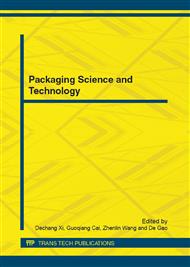p.3
p.13
p.22
p.27
p.32
p.37
p.42
p.48
Theory Model for Ameliorative Airbag Based on Precision Airdrop
Abstract:
Analyzed the ameliorative landing cushion airbag’s structure and cushion theory based on precision airdrop. Built its physics model and mathematics model using thermodynamics and engineering mechanics methods. Established the correlativity of the structural parameters. And then, validate the cushioning effect of the ameliorative airbag by computing the example. Summarized the analyzing and computing theories which to reduce the acceleration peak-value by ameliorating the structure of airbag, which offered a new route and theoretical basis for improving the precision airdrop security of dangerous and frangible goods.
Info:
Periodical:
Pages:
3-12
Citation:
Online since:
October 2012
Authors:
Price:
Сopyright:
© 2012 Trans Tech Publications Ltd. All Rights Reserved
Share:
Citation:


